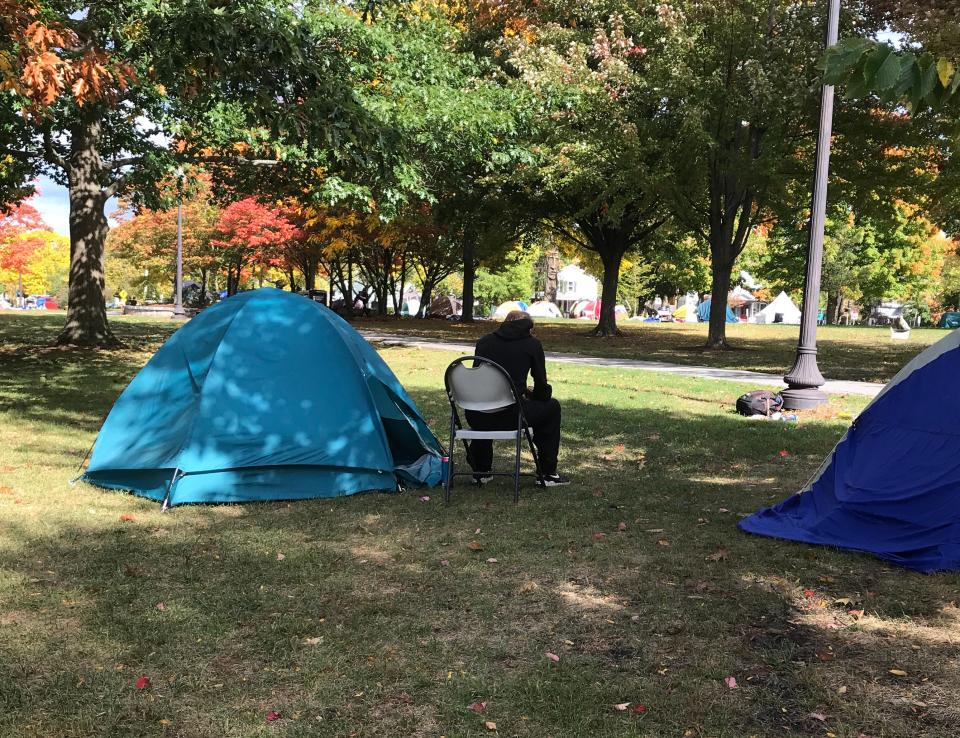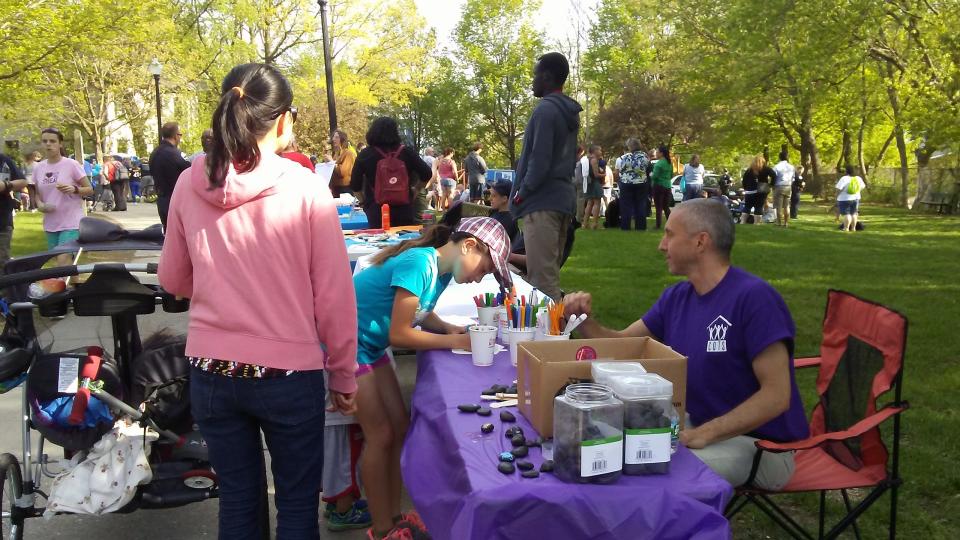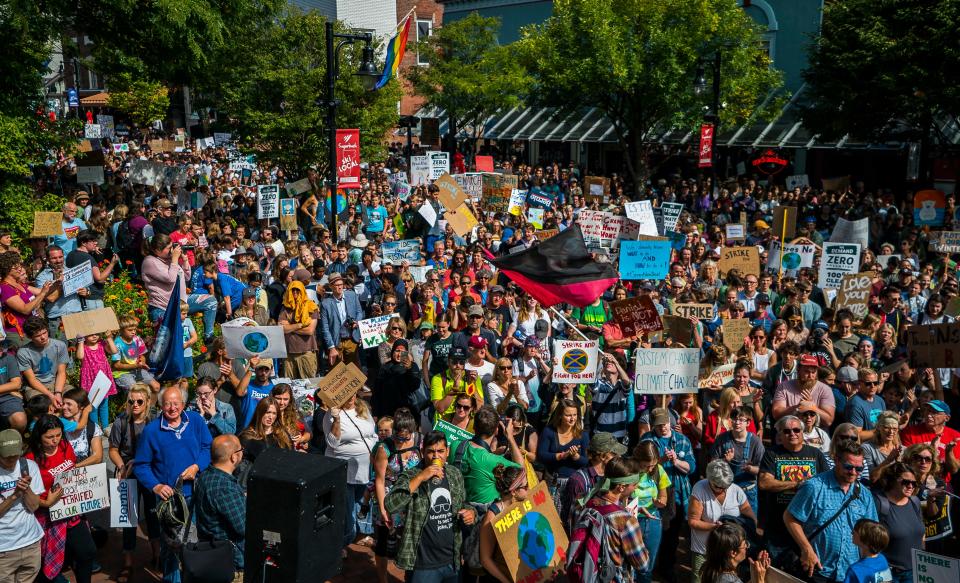Homeless in the heat: How heat waves impact Vermont's most vulnerable residents
July in Burlington was hot.
July's average high temperature of 84.2 degrees exceeded the normal average by two degrees, with seven days pushing above 90 degrees, according to the National Weather Service.
This sweltering heat can be dangerous, especially for Vermont's most vulnerable residents.
People who are homeless, elderly, chronically ill, lack transportation, and lack air conditioning are more prone to heat exhaustion, heat stroke, and other heat-related illnesses, says the state Department of Health on their website.
"Many times it's been a question, are we gonna survive the [day] through the heat?" said Matthew Huante, a Vermont resident who recently acquired housing, but was previously living out of a van. "I don't know if I would have been able to stay in a vehicle through this heat. I don't know if I would have lived."

Turning up the temperature:We created scorching 'heat islands' in East Coast cities. Now they're becoming unlivable
Extreme heat poses particular challenges to people experiencing homelessness, Rebekah Mott, who works at the Vermont nonprofit Committee on Temporary Shelter, wrote in an email.
For example, food-borne illnesses are more likely when people can't keep food cold because they don't have access to refrigerators, Mott said. Extreme heat can also exacerbate medical conditions that many homeless people face, including malnutrition, insomnia, and untreated wound infections.
Nationally, extreme heat contributes to the death of about 1,500 people every year — about half of whom advocates estimate to be homeless, the Associated Press reported last month.
Burlington ranks among the top 'heat islands' in the country
Despite its northern location, Burlington ranks number 13 out of all cities in the country for urban "heat island" intensity, according to a 2021 report by the nonprofit Climate Central.
Heat islands are city areas that absorb high amounts of heat in unshaded roads, parking lots, and buildings, and then radiate that heat into the air. At peak temperatures, heat islands can get 15 to 20 degrees warmer than nearby tree-lined areas, according to the National Integrated Heat Health Information System.
The high temperature difference between Burlington's hottest areas and its relatively cool surrounding areas caused the city to rank high in Climate Central's heat island report. The report says that Burlington's high temperatures are primarily due to its asphalt, concrete, and brick absorbing the sun's rays.
The good fight:Two iconic Vermont organizations announce steps to address climate change
For July, the average high temperature of Burlington was 5.7 degrees more than St. Johnsbury, 2.5 degrees more than Montpelier, and 1.8 degrees more than Plattsburgh, according to the National Weather Service.
Heat illnesses increase with climate change in Vermont
Heat-related illness brought 650 people in Vermont to hospital emergency departments and an additional 48 people to receive inpatient hospital care from 2012-2018, according to hospital discharge data compiled by the Department of Health. This data does not track whether or not a person was homeless, the Department of Health wrote in an email.
"Heat can cause serious illness. Heat illnesses can be deadly," says the Vermont Department of Health on their website.
Heat-related emergency department visits are becoming more frequent, increasing by an average of 2-3 visits every year from 2003-2019, state Public Health Communication Officer Bennett Truman wrote in an email. "This likely underestimates the actual trend," Truman wrote, as state data stopped tracking Vermont residents treated in out-of-state hospitals in 2013.
Throwing shade:Burlington's tree canopy can help cool the city, reduce carbon and even save money

This increase in heat-related emergency department visits comes as climate change has heated up Vermont significantly over the last 50 years. Since 1970, Vermont has become more than 4 degrees warmer in the winter and 2 degrees warmer in the summer, with spring arriving two weeks earlier and winter arriving one week later, according to the Department of Health website.
During a record-breaking heat wave in 2018, four elderly Vermont residents overheated to death in their homes. Temperatures in one of their homes had reached 115 degrees, according to their death certificate.
Vermont has no 24/7 emergency cooling sites
In the midst of the 2018 heat wave, Vermont 2-1-1 and other human services organizations received calls for emergency cooling assistance, but "there are no dedicated state or federal funds for these purposes," the Department of Health wrote in a 2021 report.
Practical advice:How to keep electric bills down when the temperature goes up

Vermont receives federal funds to provide free overnight hotel vouchers to low-income people in urgent need of housing during cold weather under the Adverse Weather Conditions policy. There is no equivalent policy for hot weather, the Department for Children and Families confirmed in an email.
The state continues to offer some emergency housing during the warmer months, but eligibility requirements are more strict and not weather-dependent.
While Vermont does not provide expanded access to emergency overnight housing on the basis of hot weather, the Department of Health does offer a map of 244 indoor and outdoor sites for getting cool during the day: https://www.healthvermont.gov/health-environment/climate-health/hot-weather
Indoor cooling sites in Burlington open to the general public include:
The O.N.E. Center (20 Allen St.).
Robert Miller Community & Recreation Center (130 Gosse Court).
Leddy Arena (216 Leddy Park Road).
Fletcher Free Library (235 College St.).
Department of Public Works (645 Pine St.).
The Community Resource Center at Feeding Chittenden (228 N. Winooski Ave).
The COTS Daystation for people experiencing homelessness (95 North Ave.).
"[T]he addition of cooling centers is an excellent first step, and we are grateful to the city for providing this resource," Joe Domko of the Burlington homeless services agency ANEW Place wrote in an email. "The best solution would of course be an adequate spectrum of shelter and housing resources to ensure every person experiencing homelessness has access to relief from the elements."
Contact April Fisher at amfisher@freepressmedia.com. Follow her on Twitter: @AMFisherMedia
This article originally appeared on Burlington Free Press: Homeless in the heat: How hot weather hurts Vermont's most vulnerable

